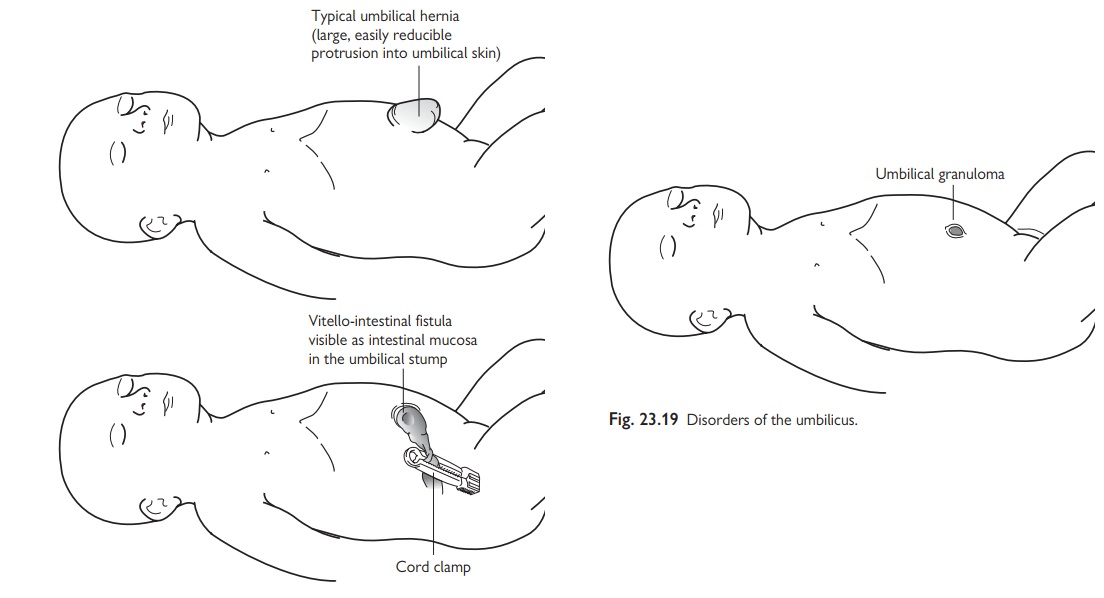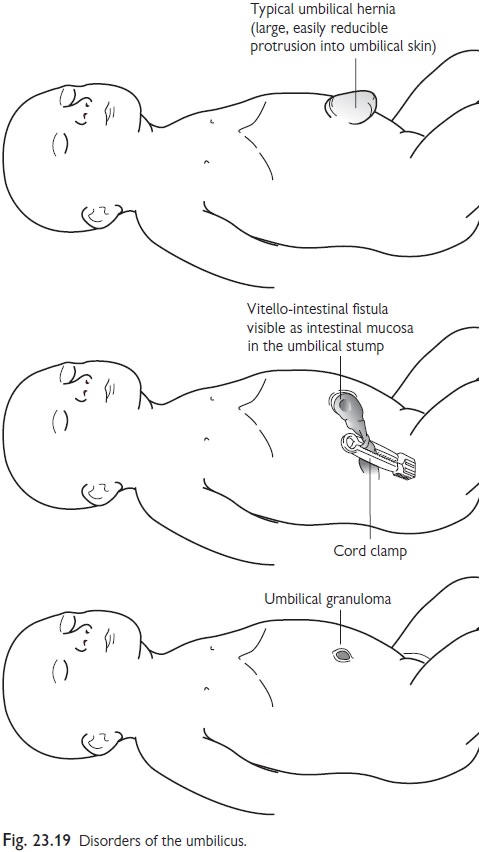Chapter: Paediatrics: Paediatric Surgery
Paediatrics: Umbilical anomalies

Umbilical anomalies
Granuloma
The commonest umbilical
abnormality seen in infants is an umbilical granu-loma (see Fig. 23.19). This
is a harmless reaction to the resolving umbilical stump and usually disappears
by the 2nd to 3rd week.

Treatment
A persistent granuloma should be
cauterized with a silver nitrate stick. Vaseline should be applied round the
umbilicus to prevent damage to the surrounding skin and a small dressing placed
over the umbilicus to prevent marking of the babyŌĆÖs vest. Multiple applications
may be necessary.
Caution A persistent ŌĆśgranulomaŌĆÖ
discharging small bowel contents signifies a patent vitello-intestinal duct
(Fig. 23.19). Treatment involves surgical exploration of the umbilicus and
excision of the duct with a small segment of ileum. The diagnosis is clinical.
Urachal remnants
These are uncommon anomalies that
present in infancy or early child-hood. The urachus is an embryonic tubular
connection between the blad-der and the allantois that normally obliterates
before birth.
ŌĆó
Main symptom: persistent discharge of urine from
the umbilicus.
ŌĆó
Bladder outlet obstruction (posterior urethral valves) should
be excluded by micturating
cystography. Treatment is surgical closure.
Umbilical
hernias (Fig. 23.19)
ŌĆó
Common,
particularly in Afro-Caribbean children.
ŌĆó
Most
will close spontaneously during the first few years of life, regardless of
size.
ŌĆó
Complications
are rare.
If the hernia fails to close
surgical repair can be performed at around 5yrs of age.
Related Topics